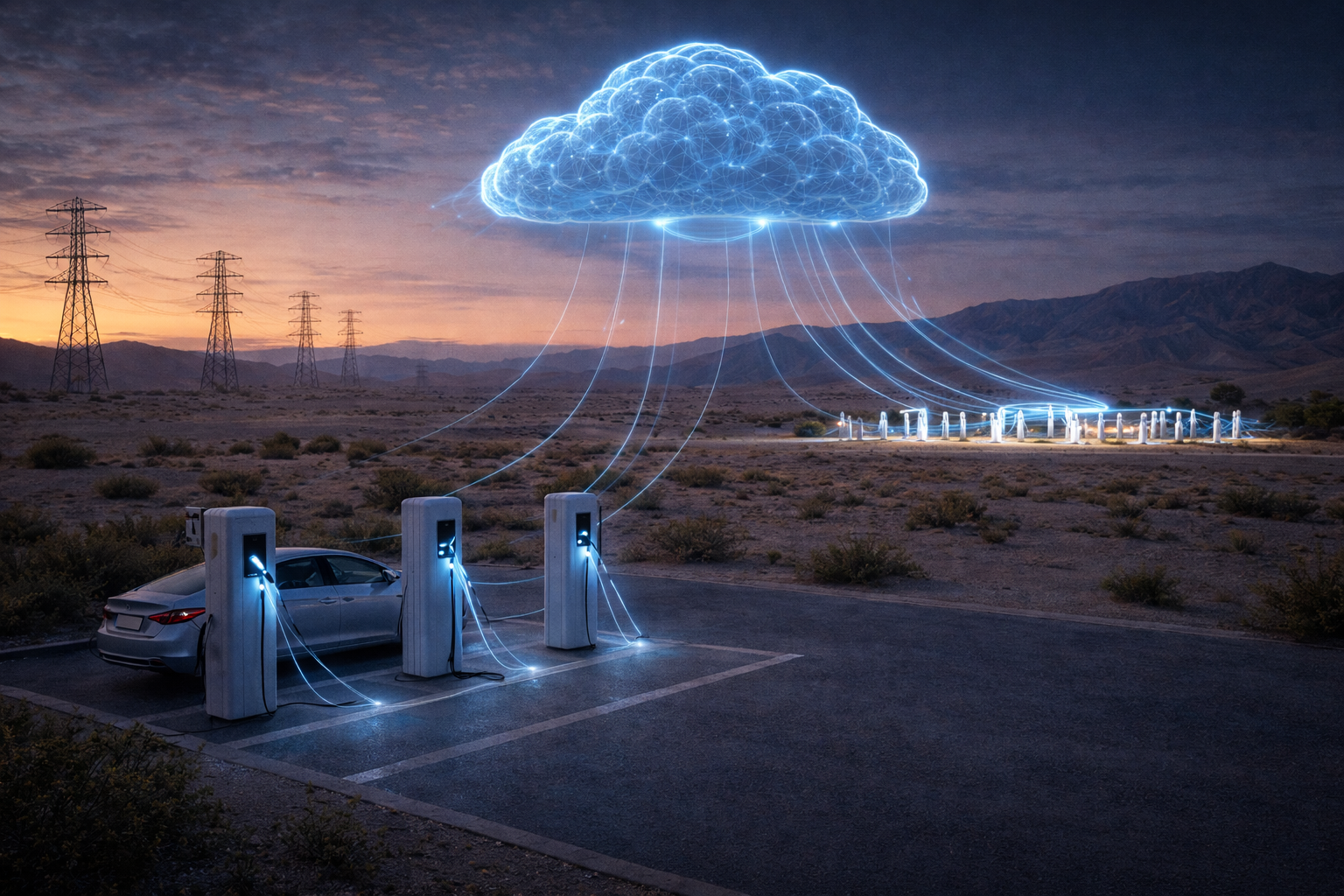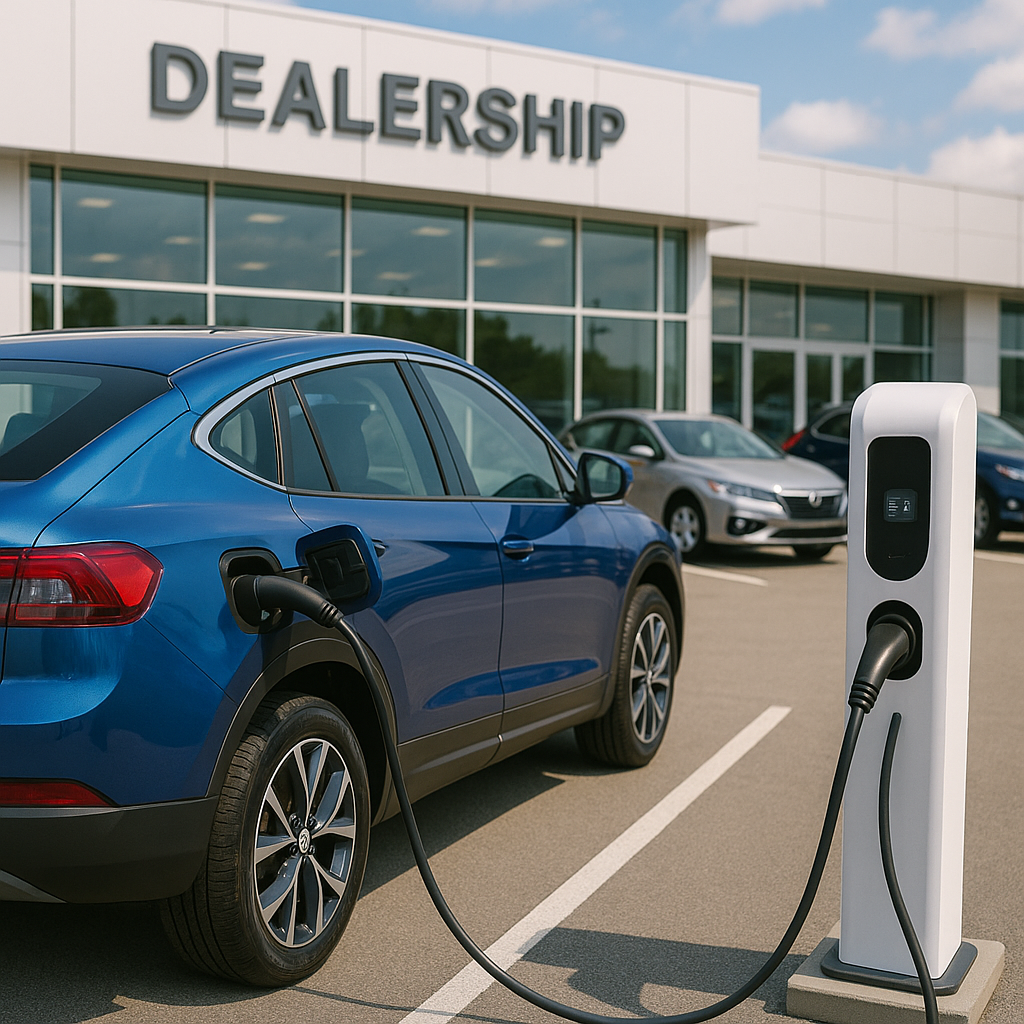Charging Ahead: Software Technology’s Critical Role in Fleet Electrification

In the quest for sustainability, fleet electrification has the potential to transform the transportation landscape. There’s a growing awareness of the environmental—and ideological—baggage that comes with fossil fuels. Cue the automotive revolution and the continued rise of clean, green electric vehicles (EVs).
However, this revolution isn’t just about the hardware; software also has a leading role to play. Custom software enables EV transition and facilitates fast charging network scalability to meet rising demand. And with the right software solution, your entire fleet can become more productive too.
Customized software enables EVs to recharge their batteries faster and at a lower cost, helping to drive the growth of charging networks. As the leading software development partner for EV charging, S44 started on the electrification journey back in 2014 when it guided a luxury automotive OEM's innovative EV charging program to provide flexibility to the California electricity grid by relieving grid congestion while lowering the overall cost of owning EV and PHEVs.

What is Fleet Electrification?
Fleet electrification is the use of electric-powered vehicles instead of conventional vehicles that require fossil fuels. It can apply to cars, trucks, vans, buses, and other automotive vehicles. Here, electrification is a key strategy for cutting carbon emissions and moving to a more sustainable transportation system. The upgrade also offers long-term financial benefits.
The internal combustion engines that burn fossil fuels are dirty. Fuels such as diesel, gasoline, and natural gas come from underground deposits that end up releasing carbon into the atmosphere. There are also many toxic byproducts in their extraction and use.
On the financial side, fossil fuels cost a lot compared with electricity. Furthermore, internal combustion engines have high maintenance costs because they get clogged with residues from the combustion process. Fleet electrification not only lowers these costs but also renders companies eligible for grants and other incentives. In some cases, one can even resell electricity from the vehicle batteries to the grid—at a profit.
There are numerous other advantages to fleet electrification. Organizations that take on this opportunity will build themselves a better reputation and increase their sales to environmentally minded customers. Moreover, the vehicles themselves drastically reduce noise pollution.
Fleets comprise a substantial chunk of the economic and ecological costs of transportation. At the same time, the total cost of ownership (TCO) for electric vehicles is becoming ever more favorable when compared with standard fossil fuel vehicles. These factors are pushing industry to electrify. According to a survey by McKinsey, over half the organizations across the fleet value chain are working to upgrade to EVs in the next few years.
Problem: Challenges in Fleet Electrification & Electric Vehicles (EV) Space
While there’s an obvious momentum behind fleet electrification, there are several challenges along the way. To access the financial and environmental benefits requires overcoming these challenges.
One of the main sticking points is the need to add and upgrade infrastructure, including depots and EV charging stations. There’s also the issue of making charges fast and cost-effective—something not all charging stations accomplish. Electrical costs vary, depending on the time and location. Vehicle maintenance also needs an overhaul.
Interestingly, some fleet owners worry that the improvements themselves will take too much time and effort. Others are concerned about the distances EVs can travel, known as “range anxiety.” Purchase-wise, there are anxieties over vehicle availability and upfront costs. Delaying electrification can therefore happen due to psychological as well as financial reasons.
Nonetheless, the gains from fleet electrification far outweigh the costs. As such, businesses are finding ways to overcome the challenges. The crucial takeaway is that EVs have a superior long-term return and are forecast to keep increasing their market share.
One important way in which companies are responding to the challenges of fleet electrification is through leveraging custom software. Solutions similar to S44’s Open Source CPO can work with a wide range of hardware, adapting to changing systems and integrating with other software platforms. Expected benefits include things such as interoperability, security and functionality improvements. Thus, custom software facilitates important capabilities including monitoring, alerting, and energy management.
Managing and optimizing a fleet of electric vehicles can be a complex task, especially when it comes to charging and energy management. This is precisely where custom software can play a critical role.

Custom Software for Electrified Fleets
Software designed specifically for fleet electrification offers numerous benefits. For example, it can help fleet managers to monitor the charging status and battery health of each vehicle. The custom software then optimizes charging schedules to minimize costs and reduce grid impacts.
Other important advantages are to be found in areas such as route planning to maximize EV range and efficiency. In these ways, software can address issues such as range anxiety and insufficient charging infrastructure.
While enhancing EV performance, custom software also provides fleet owners with valuable insights. Data analytics on electricity use and emissions reveal how well the fleet is doing financially and environmentally. It’s possible to see vehicle status instantly and identify areas for improvement.
Software solutions tailored to fleet electrification can realize substantial efficiency gains. For instance, fleet management software tracks and controls vehicles, including maintenance schedules and fuel economy. There’s also software to plan EV charging infrastructure. Overall, these solutions allow organizations to operate infrastructure and manage energy—a core component of fleet electrification.
Interoperable Charging Protocols
One key way to improve fleet electrification is through standardized charging protocols. Consider: if each vehicle or charging network connected differently, it would be incredibly difficult to find a functional charging station—resulting in inefficient fleet operations.
However, standardization makes charging protocols interoperable. If your equipment supports the key protocols, it’s easy to charge anywhere. Custom software from S44 encompasses the main standards of Open Charge Point Interface (OCPI) and Open Charge Point Protocol (OCPP), as well as the ISO 15118 international standard.
These standards let you charge vehicles from the grid, and also sell power back from the vehicles to the grid. Any make or model of vehicle supporting a universal standard can communicate with all available charging stations.
The transmitted information helps make charging secure and efficient. And since the station automatically recognizes the EV, the driver doesn’t have to use an app or device to start charging.
Standards like ISO 15118 have gained enough traction in the industry to become important considerations, contributing to fleet electrification and the evolution of smart grids. These standards should therefore be incorporated into any fleet solution—with software like S44’s.
Managing the Transition
Transitioning to an electric fleet takes careful route planning. This ensures vehicles make it to all their destinations without running out of juice. Custom route optimization software helps determine the most efficient routes for EVs.
A related piece of software handles dispatch management. This calculates routes and automates vehicle assignment. It further improves operations and adds to the feasibility of fleet electrification. Custom software is built on the basis of data science.
To see custom software in action, consider S44's scalable Fleet View solution. It intelligently manages fleets in the field. Employing telematics, the system reveals data overlaid on Google Maps. Fleet managers can then see which vehicles are where and in what condition. This makes it straightforward to plan maintenance and select the best routes for high speed and low fuel use. Bottom line: go farther for less money.
Optimize Fleet Electrification with Custom Software by S44
Electric vehicles are busy revolutionizing transportation, and custom software is the secret ingredient making this process efficient. Smart solutions can resolve current challenges, such as infrastructure management and EV optimization.
Unlock the full potential of fleet electrification with groundbreaking software by S44. Working with leading automotive OEMs and charging networks, S44 helps electric vehicle networks thrive. Your organization can embrace custom software solutions as a strategic investment in fleet electrification.
Get in touch with us to find out how we can help you optimize fleet performance through custom software.







